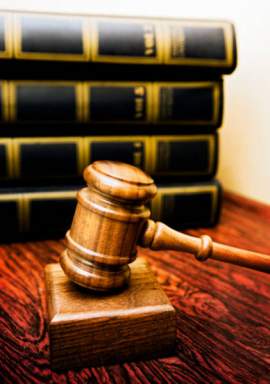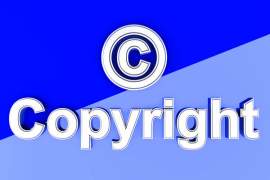
A & M Records vs. Napster

Popular In Copyright
Copyright Infringements Copyright Law What Is Copyright Legal Consequences Of Plagiarism Copyright Free Image Florida Prepaid Postsecondary Education Expense Board V College Savings Bank Famous Cases Of Copyright Law Copyright A Book Library Of Congress Copyright Copyright Laws For Motion Pictures Copyright Infringement Punishment Copyright Symbol
A & M Records vs. Napster was a major intellectual property case that took place in 2001, pertaining to the illegal file sharing of MP3 music files, which the record industry claimed was copyright infringement. The United States Court of Appeals for the Ninth Circuit affirmed the decision of the United States District Court, for which the Northern District of California held the defendant, Napster, may be liable for contributory infringement and vicarious infringement of copyrights held by companies within the music industry.
This case was responsible for bringing
peer-to-peer file sharing services into public attention, which could
potentially be used to illegally share copyrighted material, and was the first
of several other similar cases.
The Plaintiffs
Although the case is referred to as "A & M Records v. Napster",
the list of plaintiffs extends beyond just A & M Records. There were a
total of eighteen plaintiffs listed against Napster in the District Court suit,
all subsidiaries of the "big four" record companies: Universal Music Group, Sony Music Group, Warner Music
Group, and EMI. All four companies are members of the Recording Industry
Association of America (RIAA), a group formed in 1952 which represents the
recording industry distributors within the United States, making up more than
80 percent of all music officially released in the U.S.
Defendant
Napster was a company formed by eighteen year old Shawn Fanning at Northeastern
University. Napster was the first user-friendly peer-to-peer file sharing
service, which allowed any user to access other users' MP3 files, which were
easily downloaded. Napster also introduced a simple searching ability from
their central server, allowing users to quickly access a list of available
files for which they would be searching. Napster
quickly rose in popularity to its peak in 2001, as millions of users continued
downloading song files for free from other computers around the world.
District Court
The record companies involved in the case filed to place a preliminary injunction
to cease the exchange of files, which they claimed violated music copyright law. They also sought claims against
Napster for contributory and vicarious copyright infringement. To counter this
argument Napster defended itself through fair use and substantial
non-infringing use, also claiming that the injunction requested by the record
companies violated their First Amendment right to free speech.
Judge Marilyn Hall Patel ruled that the
record companies had a valid argument against Napster and had successfully
proved irreparable harm to the record industry through music copyright
infringement. The injunction against Napster was granted and the judge ordered
a plan of action to be taken by Napster to remove files protected under music
copyright from their network. Napster immediately appealed to the decision to
the United States Court of Appeals for the Ninth Circuit.
The Appeal
Napster actively countered the injunction decision through an argument. The court, however,
decided that even though Napster did not directly profit off of the material
that was distributed over their networks, the excessive copying of works
constituted music copyright infringement. The Ninth Circuit consequently agreed
with the District Court's conclusion that Napster jeopardized the record
industry's sales.
Napster identified three points of fair use in which its service properly used
copyrighted material:
1. Napster claimed that the network could be used to "sample" MP3 music files for a user to make a decision of whether or not to purchase the record.
2. "Space-shifting" was also claimed by Napster, a concept in which a user who already owns a legal copy of the music may legally download the MP3 file through Napster's network. This argument was proven invalid because when a user downloads a file in Napster, it is immediately made available to other users.
3. Napster also identified permissive distribution in its fair use arguments, in which an artist can give permission for distribution of copyrighted music through Napster's system. The court allowed this practice to continue.
The court also found that since Napster had the ability to regulate what its
users distribute over its networks, they had a responsibility to prevent music
copyright infringement from taking place.
Contributory Infringement
Napster argued in the Ninth Circuit Court that they had no way to distinguish a
copyrighted music file and a file that was not copyrighted, so they should not
be held liable for infringement. The court disagreed, however, and Napster was
found to be held
directly supporting the infringement of music copyright
material.
Vicarious Infringement
The Ninth Circuit Court sided with the District Court, agreeing that Napster's
primary draw to users was the ability to illegally obtain copyrighted work.
Also, since Napster planned to expand and increase the number of its users in
the future, their activities were ruled to be inductive to financial gain from
illegal infringement.
Aftermath
Napster struggled with the injunction demands and when they were only able to
maintain a 99.4 percent efficacy in removing music copyright work, the judge
ordered Napster to be shut down until it reached 100 percent. Napster soon
filed for Chapter 11 bankruptcy and was forced to shut down after Bertelsmann's
inquisition to purchase Napster was blocked by the court.
The record industry's case against Napster had a large impact on copyright
infringement of music and other files on the internet. Other peer-to-peer
networks emerged in the wake of Napster's demise, though
they were also subject to the same legal trouble.



















